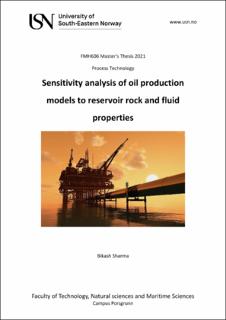| dc.description.abstract | In this fast-growing world, the demands for energy supply are growing rapidly as well. The oil has become one of the basic needs of human beings in this era. Hence, to meet the supply of the growing world, the available oil cannot be extraced with primitive methods. This can be achieved by increasing the reservoir contact for which long horizontal wells can be used. Despite having many advantages of a long horizontal well, there are still some drawbacks in this type of well which is early water coning and water breakthrough. These issues can be fixed by using ICDs, which can balance the drawdown pressure in horizontal well thus delaying the water breakthrough time. With sensitivity analysis on different input parameters, not only these problems can be tackled but also can be distinguish which of the parameter affect the most to production.
Norne oil field was discovered in 1992 in Norwegian sea and the production started from 1997. Since, the main objective of this thesis is to analyze the oil production model, Norne oil field was chosen as the real case. All the simulations were done considering the characteristics of well 6608/10-D-2H of Norne oil field assuming the reservoir to be homogenous. OLGA in combination with Rocx is being used for modelling and simulations.
The base case model of well 6608/10-D-2H was first completed using the simulation tool on which differential analysis method for sensitivity analysis was implemented. The principle of this method is changing the value of one parameter and keeping all other parameter constant. So, changing the values of the parameters by 20% from its original value, and keeping all other parameter constant, simulations in OLGA were done for 200 days. The results shows that the most affected input parameter in case of oil production was oil density, with a value of sensitivity coefficient 1.6097, which was followed by initial water saturation, viscosity, absolute and relative permeability. Similarly, in case of water produced, the most affected input parameter was found to be initial water saturation with a sensitivity coefficient 4.515, followed by water density, viscosity, absolute and relative permeability. Moreover, it was observed that rock compressibility had no effect in either oil or water production. | |
